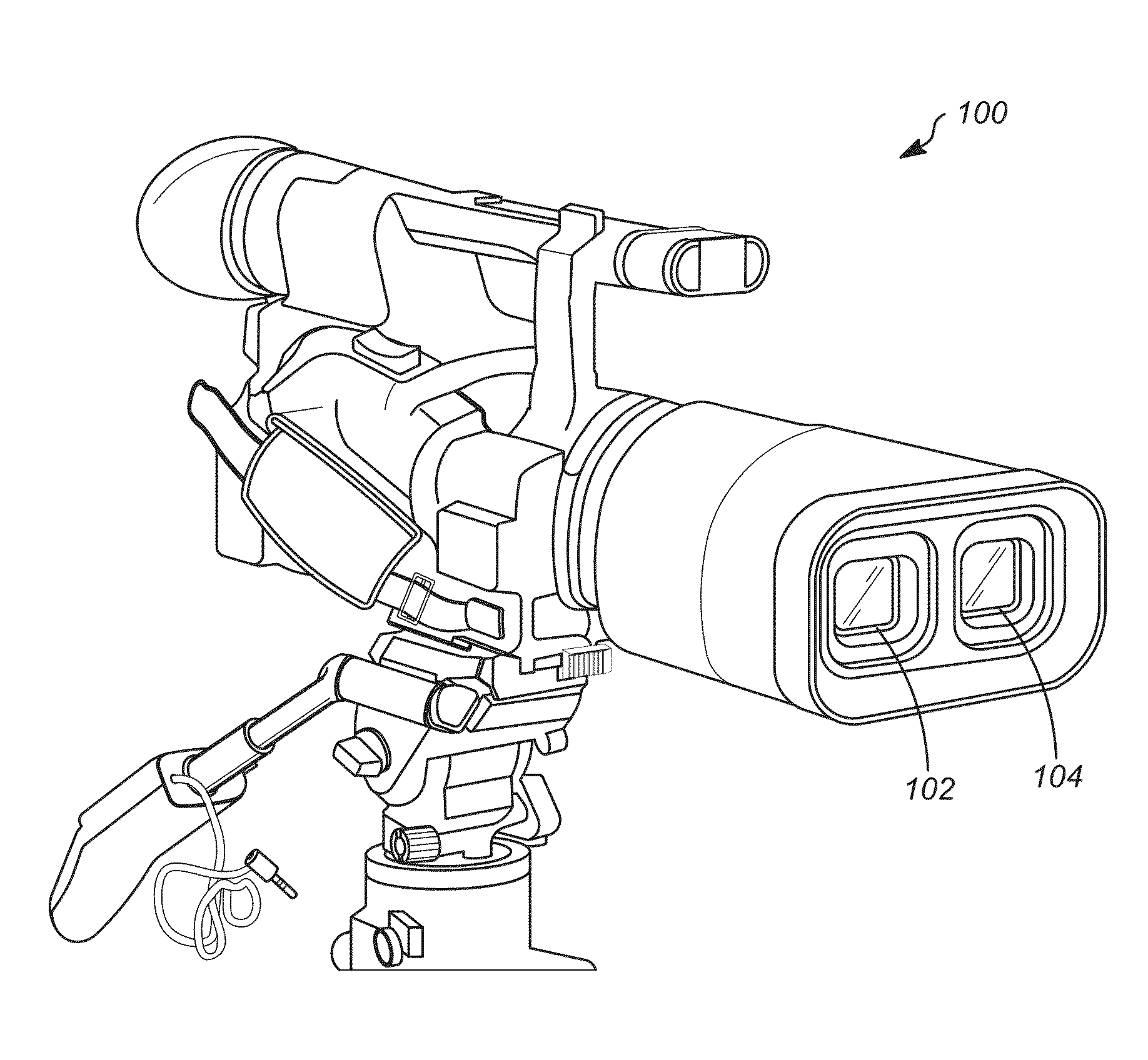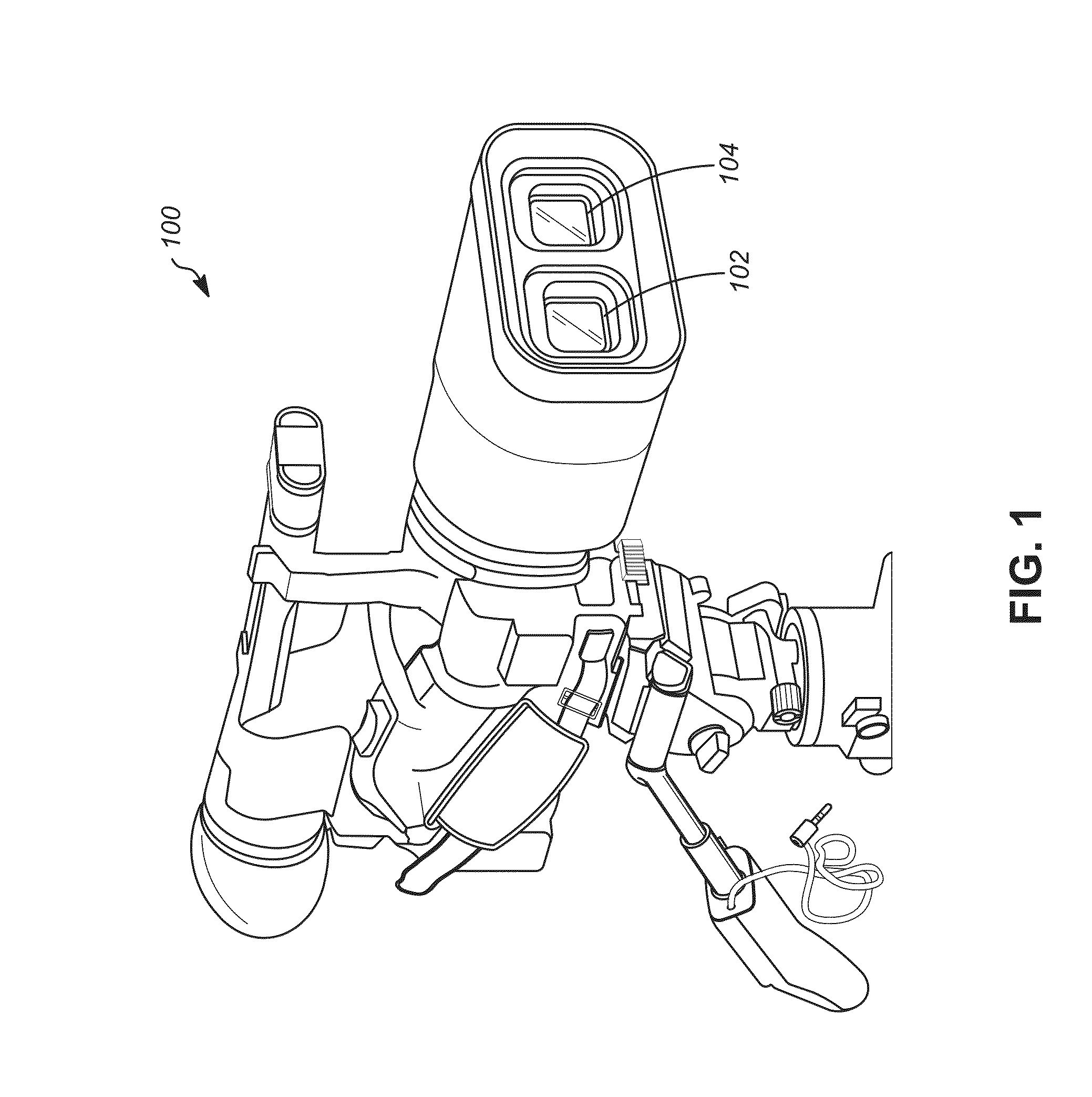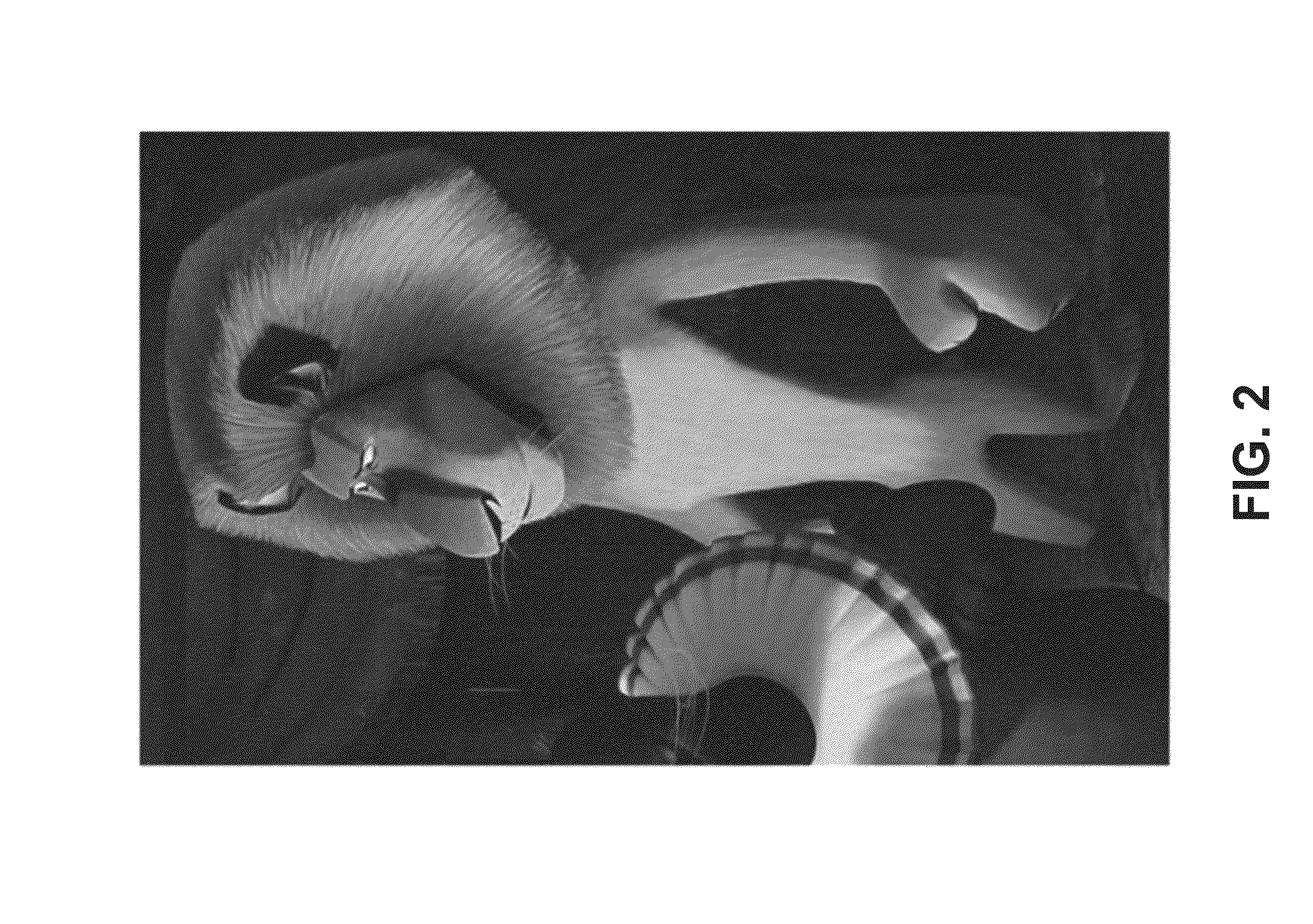Generation of three-dimensional imagery from a two-dimensional image using a depth map
a two-dimensional image and depth map technology, applied in the field of three-dimensional (3d) imagery, can solve the problems of large amount of computational resources required to render a high-resolution image of a computer-generated environment containing many objects, and the amount of required computational resources becomes even greater
- Summary
- Abstract
- Description
- Claims
- Application Information
AI Technical Summary
Benefits of technology
Problems solved by technology
Method used
Image
Examples
Embodiment Construction
[0028]The following description is presented to enable a person of ordinary skill in the art to make and use the various embodiments. Descriptions of specific devices, techniques, and applications are provided only as examples. Various modifications to the examples described herein will be readily apparent to those of ordinary skill in the art, and the general principles defined herein may be applied to other examples and applications without departing from the spirit and scope of the present technology. Thus, the disclosed technology is not intended to be limited to the examples described herein and shown, but is to be accorded the scope consistent with the claims.
[0029]Various examples are described below relating to processes for generating 3D imagery from a 2D image. The processes may allow for the perception of depth in a scene without having to capture or render true 3D imagery. In some embodiments, a 2D image of a scene is mapped to a 3D mesh that is generated using depth inf...
PUM
 Login to View More
Login to View More Abstract
Description
Claims
Application Information
 Login to View More
Login to View More - R&D
- Intellectual Property
- Life Sciences
- Materials
- Tech Scout
- Unparalleled Data Quality
- Higher Quality Content
- 60% Fewer Hallucinations
Browse by: Latest US Patents, China's latest patents, Technical Efficacy Thesaurus, Application Domain, Technology Topic, Popular Technical Reports.
© 2025 PatSnap. All rights reserved.Legal|Privacy policy|Modern Slavery Act Transparency Statement|Sitemap|About US| Contact US: help@patsnap.com



